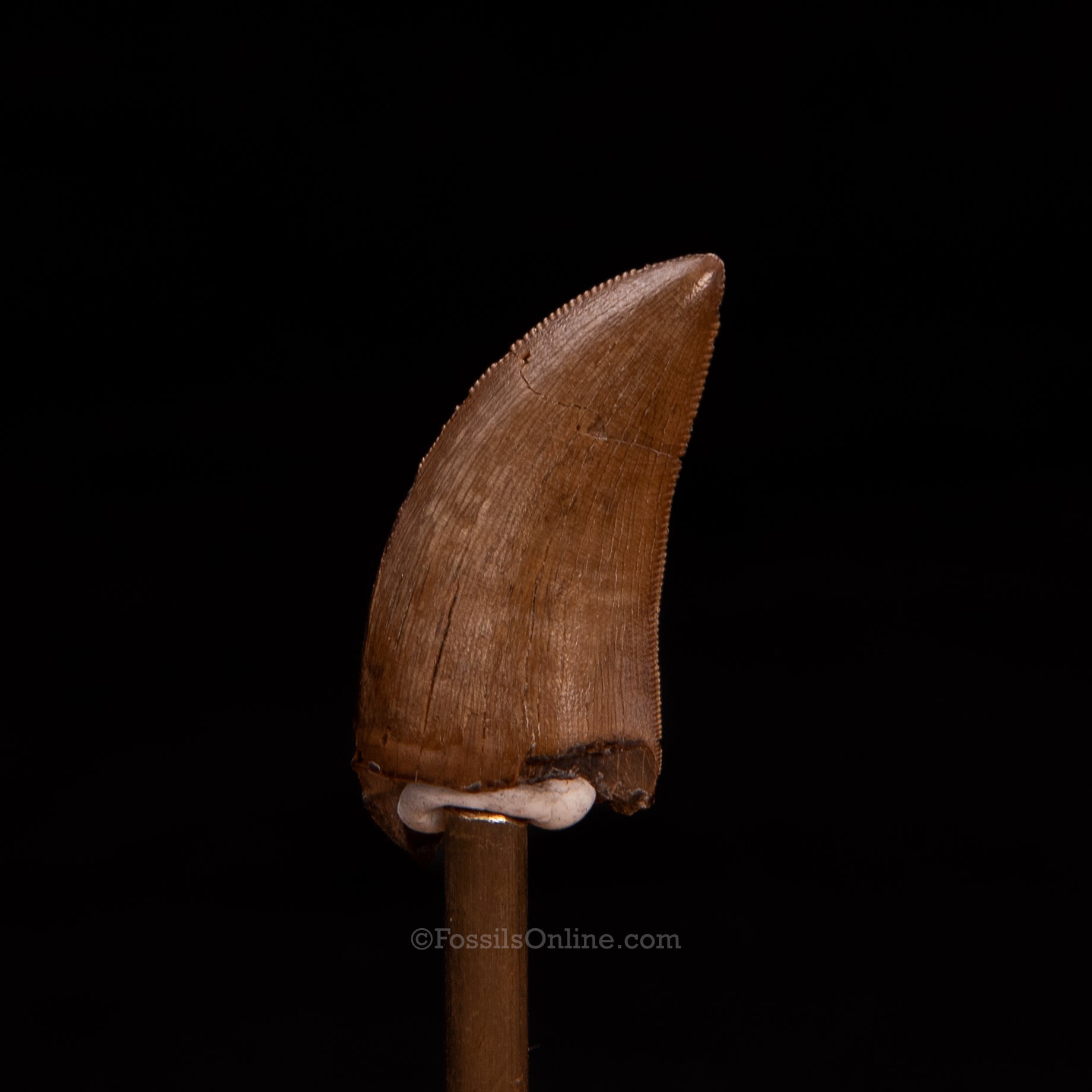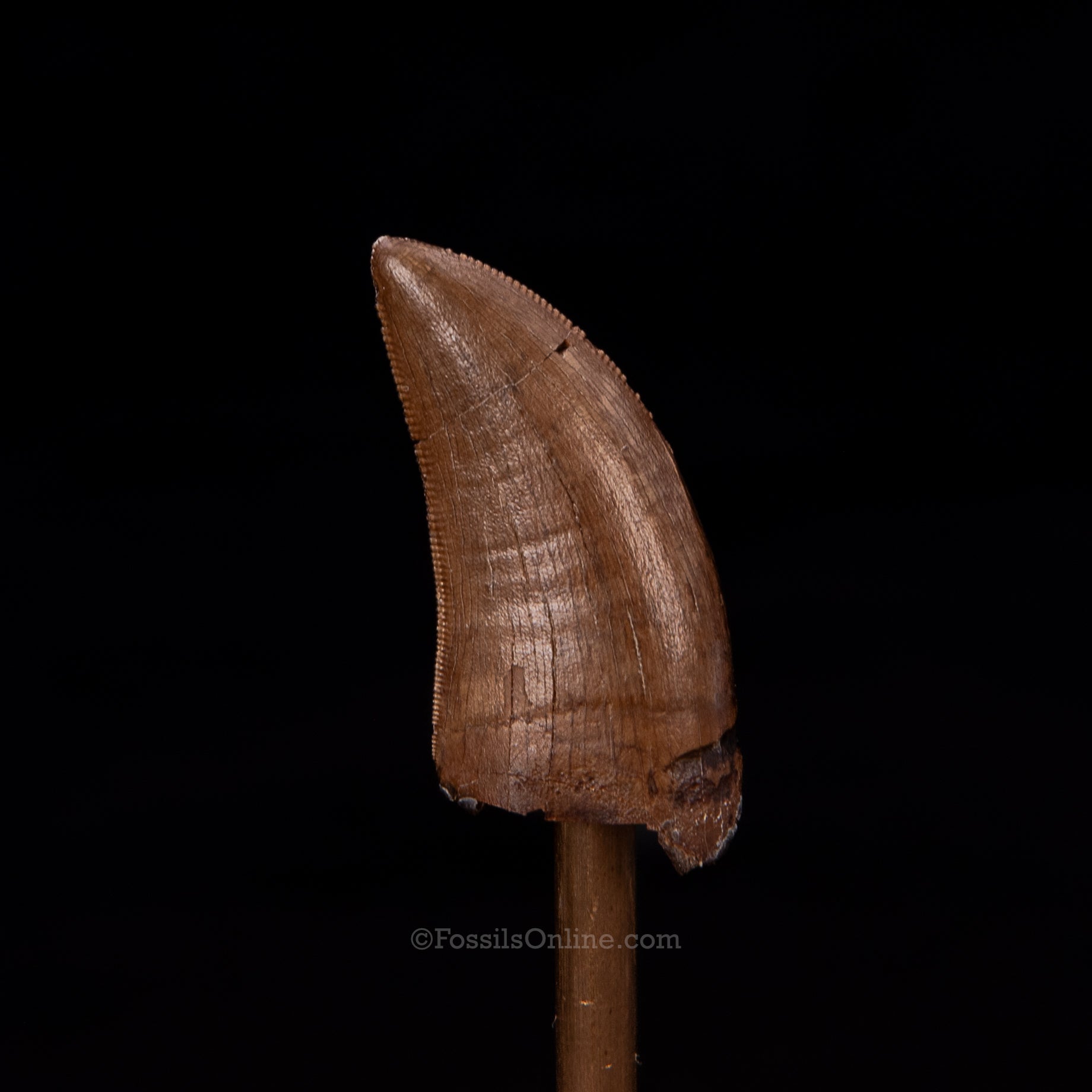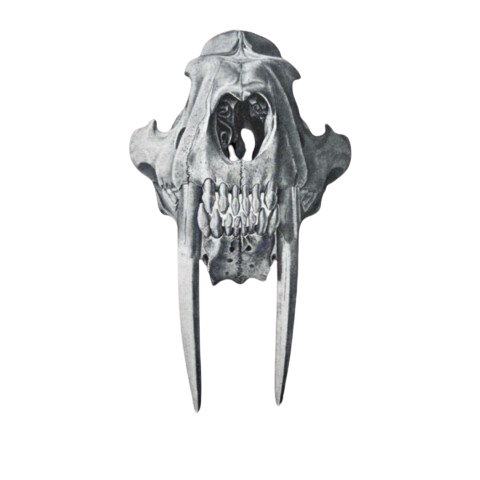

Tyrannosaurid tooth 1.32"
This beautifully preserved Tyrannosaur tooth was found deep in the Judith River Formation of Montana, where stable conditions helped protect it for millions of years. The enamel is rich and glossy, with sharp serrations still intact. Though nearly perfect, the tip was found broken and has been carefully reattached—restoring the tooth to its original form.
The Judith River Formation in Montana is an important site for understanding the Late Cretaceous period, about 75 to 80 million years ago. This area is particularly known for its rich diversity of dinosaur fossils, which include hadrosaurs (duck-billed dinosaurs), ceratopsians, and theropods such as the Albertosaurus, Gorgosaurus and Daspletosaurus. The hadrosaurs are especially notable, with numerous well-preserved specimens providing valuable insights into these large herbivores. The ceratopsians, distinguished by their ornate horns and frills, are not represented by Triceratops in this formation but by other unique species that contribute to our understanding of ceratopsian diversity. The theropods, representing the predatory dinosaurs of the era, provide a glimpse into the complex ecosystem of the Late Cretaceous in North America. Overall, the Judith River Formation is a key site for paleontological research, offering a comprehensive picture of dinosaur life and biodiversity during this fascinating epoch.
AGE
Cretaceous
LOCATION
Montana
FORMATION
Judith River
Size
1.32"
Choose options


